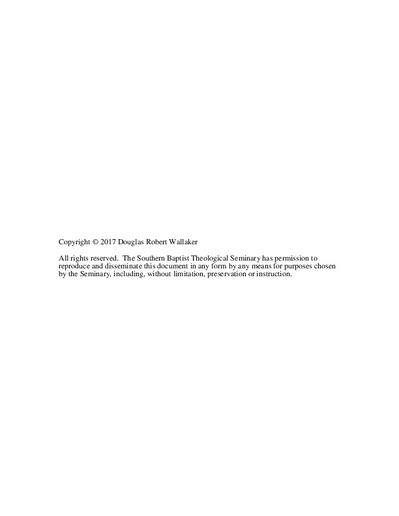| dc.description.abstract | The story of Sarah and Hagar has been treated as one of the foundational stories for the nation of Israel. Yet, Paul, in one deft allegory, will attempt to overturn centuries of theological and historical interpretation. Against other interpretations, I argue that Paul’s untraditional uniting of Hagar, Sinai, and the present Jerusalem together was accomplished through the interpretive key provided in 4:23: the one who comes from a slave has been born because of the flesh, and the one who comes from a free woman has been born through the promise.
Paul no longer reads the story of Sarah and Hagar through a lens of separation based on physical realities, but rather through the lens of promise and flesh, as helpfully stated in 4:23. Ishmael was not “cast out” because of his sinfulness or supposed ethnic deficiencies, but rather because he was born “κατὰ σάρκα” and not “δι᾽ ἐπαγγελίας.” These comparative realities are not introduced here in the allegory for the first time; rather, Paul has been building these comparisons as his primary argument since the foundational 2:15-21. This dissertation, therefore, not only interprets the allegory in consideration of the lens of 4:23, but seeks to set the argument within both the thematic and schematic content of Galatians.
While the first chapter summarizes and categorizes the typical interpretations of the difficult Galatians 4:21-5:1, the second chapter seeks to critique these approaches to the allegory. The value of applying Paul’s interpretive lens (Gal 4:23) to the allegory is argued for in the third chapter. By using the hermeneutical lens of 4:23, many of the allegory’s difficulties are eased, and the meaning and import of the allegory is clarified. The fourth chapter seeks to set the allegory within the epistle, both thematically and schematically, centering the main propositio around Paul’s remarks to Peter in Galatians 2:15-21. Finally, the last chapter looks at some limited applications of the thesis to OT hermeneutics, specifically in literal and allegorical readings of the Sarah/Hagar incident. | en_US |

